Korean traditional clothing, also known as Hanbok (한복), has a rich and interesting history dating back to the Three Kingdoms period in Korean history. Hanbok is unique and distinctive, and it is still worn today for special occasions and celebrations. In this article, we will take a closer look at the history of Korean traditional clothing and its evolution over time.
 |
| Two girls wearing Korean traditional clothing in Gyeongbokgung palace. © iStock |
Note: All images below are from https://www.deviantart.com/glimja
The Three Kingdoms Period (삼국시대)
The Three Kingdoms (Goguryoe, Baekje, Shilla) period of Korean history, which lasted from 57 BC to 668 AD, saw the development of the first forms of Korean traditional clothing. During this time, clothing was influenced by the styles of neighboring countries, such as China and Japan, as well as the indigenous styles of the Korean people.
 |
| © Glimja |
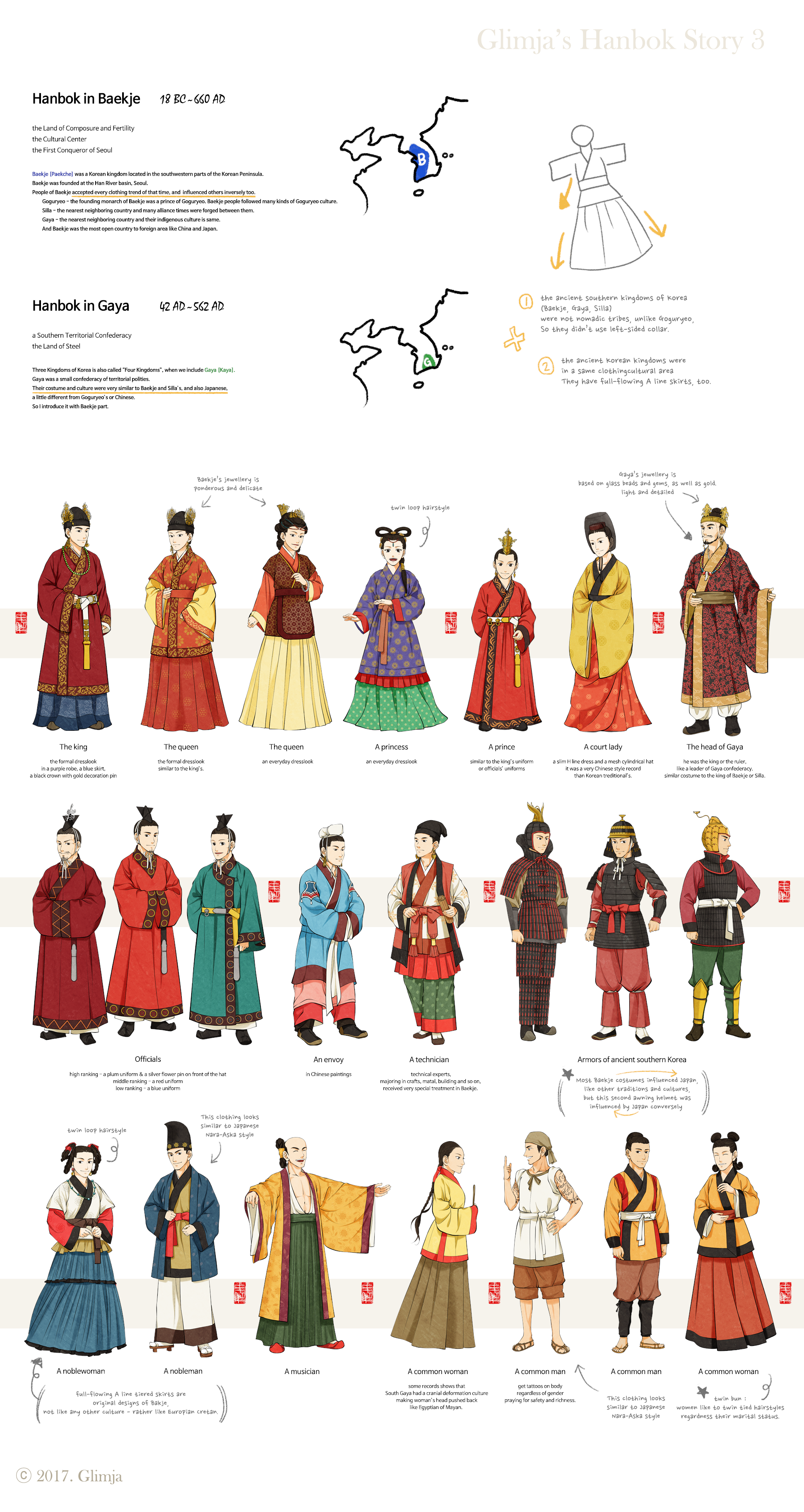 |
| © Glimja |
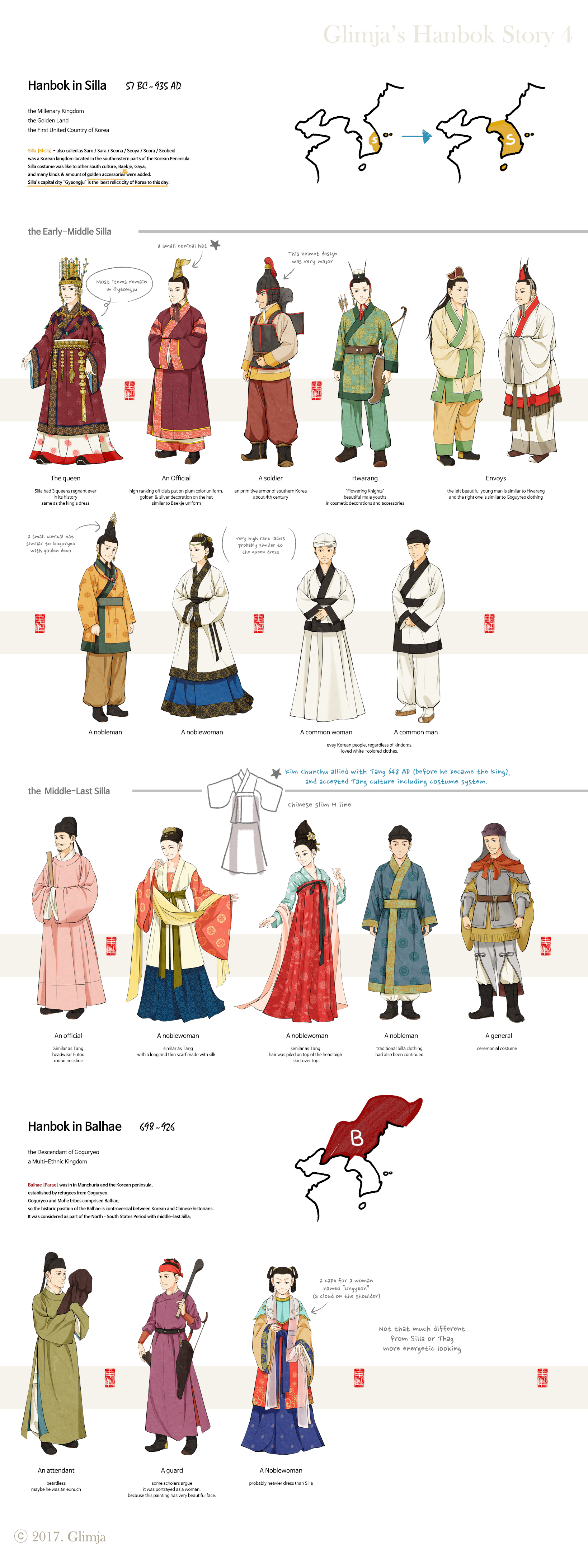 |
| © Glimja |
The Goryeo Dynasty (고려시대)
The Goryeo Dynasty, which lasted from 918 to 1392, saw the development of more sophisticated forms of traditional Korean clothing. During this time, clothing became more complex and ornate, with intricate designs and patterns. The Goryeo Dynasty was also a time of great artistic and cultural development, which is reflected in the beauty and intricacy of traditional Korean clothing from this time.
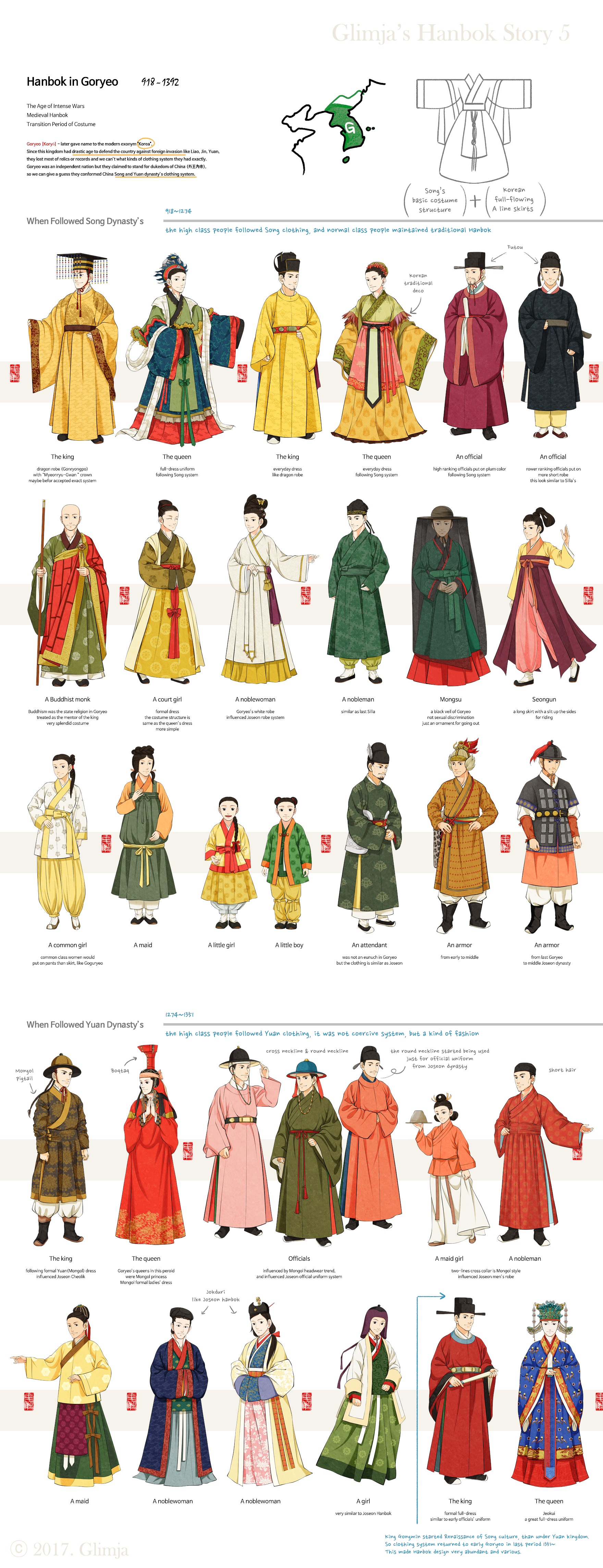 |
| © Glimja |
The Joseon Dynasty (조선시대)
The Joseon Dynasty, which lasted from 1392 to 1910, was a time of great change for Korean traditional clothing. During this time, the styles of clothing became more simple and more practical, reflecting the Confucian values that dominated the Joseon court. Hanbok from the Joseon Dynasty was characterized by its clean lines, unadorned surfaces, and practicality.
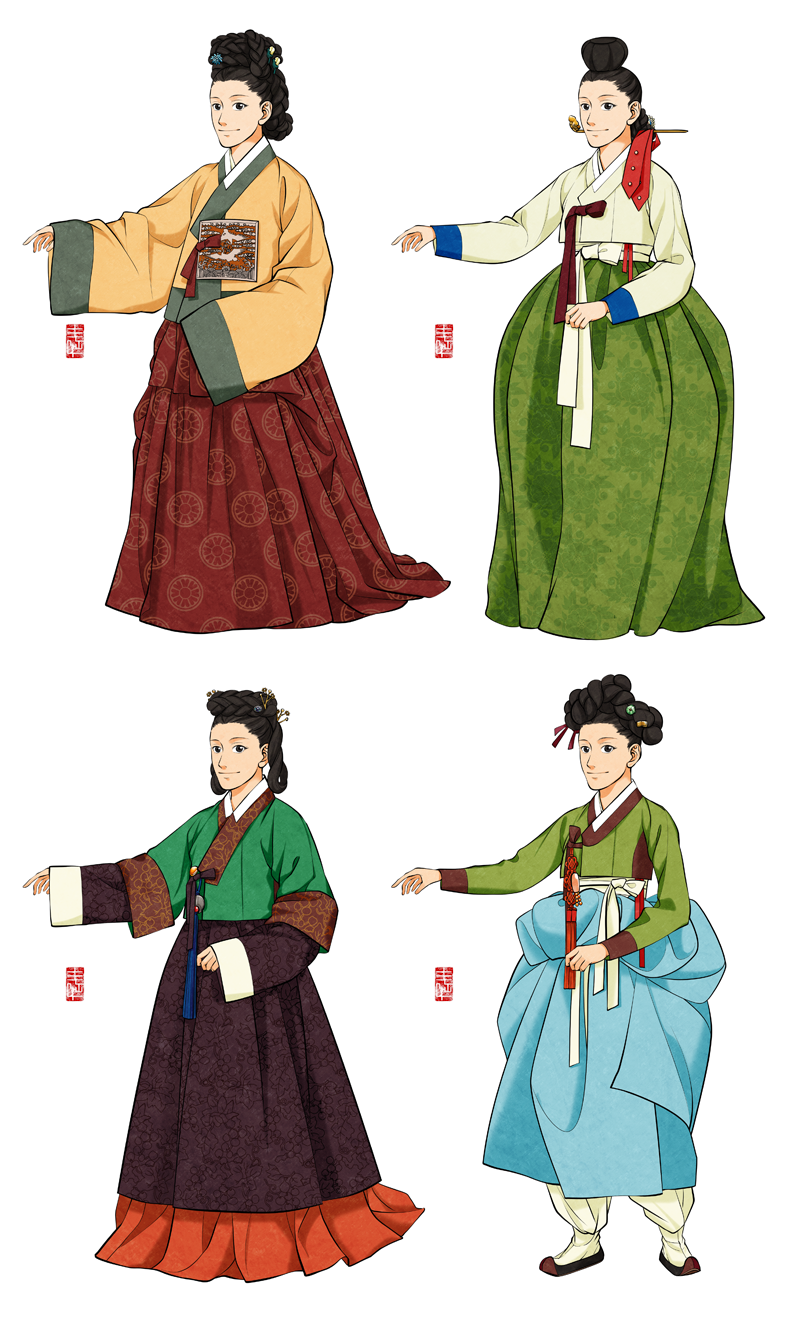 |
| © Glimja |
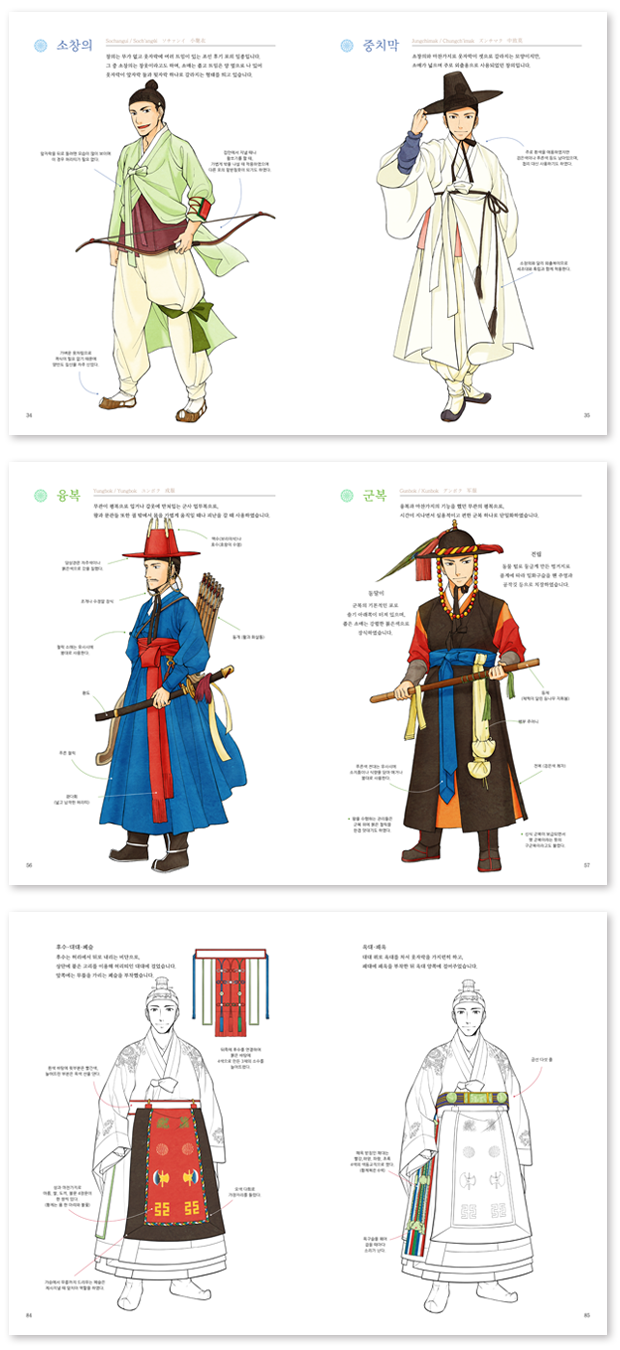 |
| © Glimja |
The Modern Era
In the modern era, traditional Korean clothing has evolved to become a symbol of Korean culture and heritage. Hanbok is still worn today for special occasions and celebrations, such as weddings, traditional Korean holidays, and cultural events. The styles of Hanbok have changed over time to become more comfortable and practical, while still maintaining the traditional look and feel of the clothing.
 |
| © Glimja |
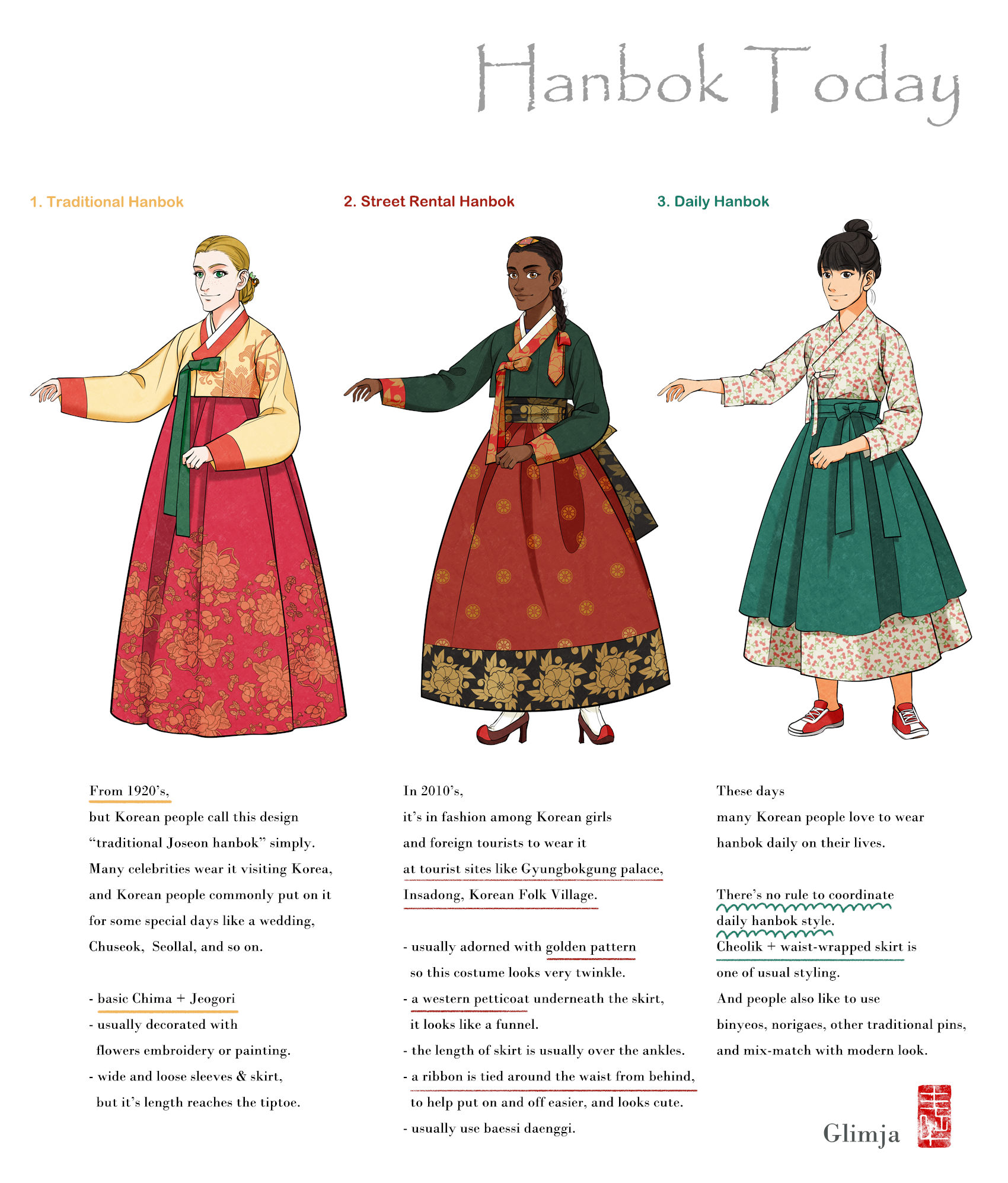 |
| © Glimja |








